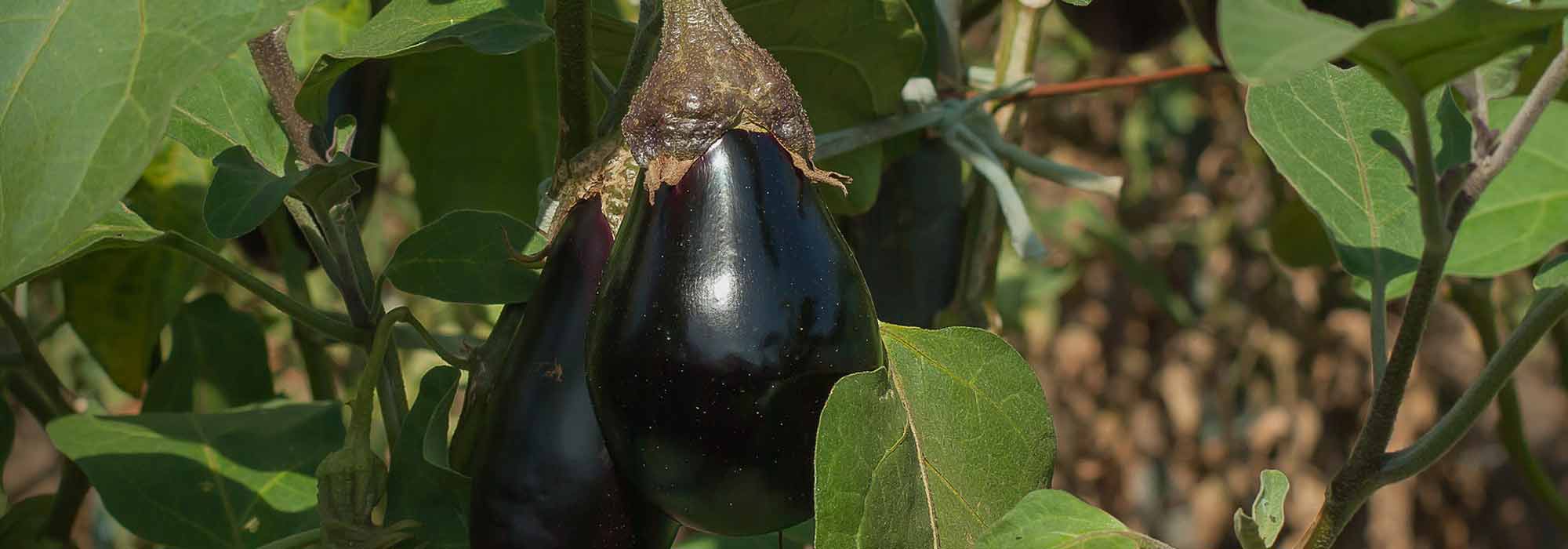
Aubergine: 6 varieties for beginners
Selection of productive and resilient aubergines, perfect for beginners
Contents
Aubergine is one of the essential fruit-vegetables in the vegetable garden, where it is grown as an annual during the warm season. It is prepared with onions, goat cheese, mozzarella, tomatoes, courgettes, and a hint of herbs and basil! This vegetable lends itself to many delicious recipes!
In general, growing aubergine is relatively easy. However, this vegetable plant can be susceptible to certain diseases, requiring some cultivation precautions that can make the task more challenging, especially for a beginner gardener still learning.
Discover here our selection of 6 aubergine varieties in plants or seeds, for beginners, which offer both good disease resistance and excellent yield!
Aubergine ‘Rania’ F1: as resilient and productive as it is delicious
Hybrid and early variety, the aubergine ‘Rania’ F1 is highly valued for its productivity and excellent resistance to common diseases of Solanum melongena. It is also remarkable for the particularly sweet flavour of its fruits.
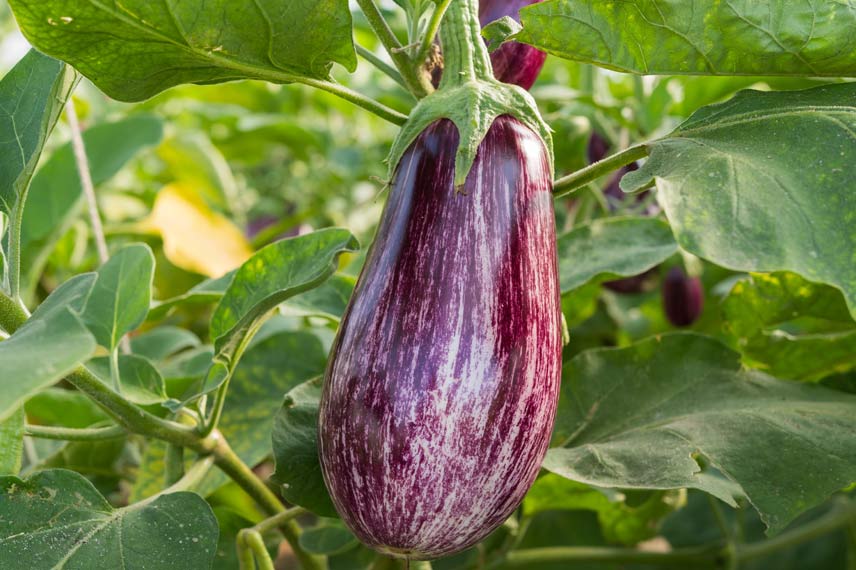
Aubergine ‘Rania’ F1
The ‘Rania’ F1 produces very beautiful fruits with an epidermis purple striated with cream white. Oval in shape, these bicoloured aubergines are also 20 to 22 cm long and weigh on average between 250 and 300 g. Their soft and melting flesh can be prepared in a thousand ways, perfect for tians as well as ratatouilles, gratins, and stuffed aubergines, etc.
This easy-to-cultivate variety is planted in full sun in a clay-loamy and cool soil. It is sown in warmth from February to April, for planting in open ground between mid-May and June. Its abundant fruiting offers many fruits to harvest between July and October.
Read also
Eggplant: diseases and pestsAubergine ‘Clara’ F1: a disease-resistant hybrid with a delicate flavour
Hybrid variety, the aubergine ‘Clara’ F1 stands out for its original white fruits, which it produces abundantly. Moderately vigorous, it is easy to grow due to its good resistance to diseases.
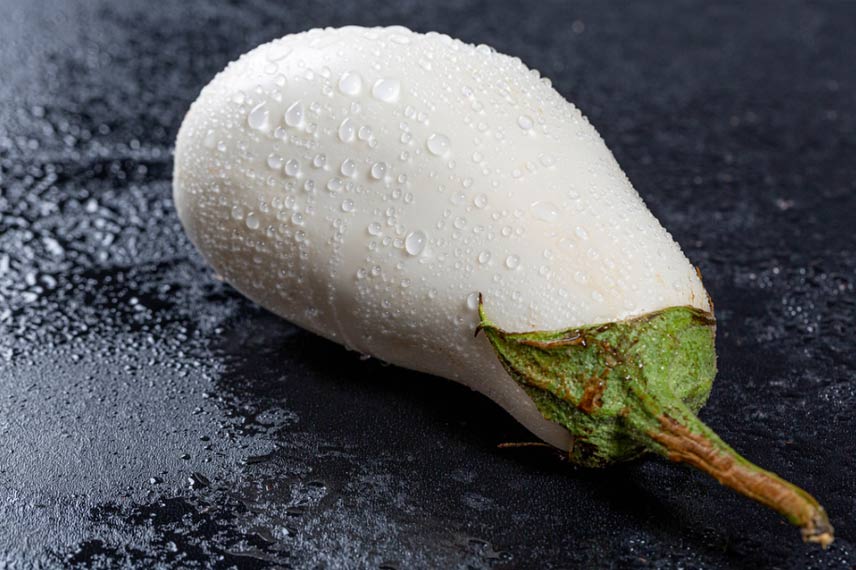
Aubergine ‘Clara’ F1 © Marco Verch Professional Photographer – Flickr
The superb white, oval fruits of ‘Clara’ F1 measure on average between 18 and 20 cm long, with a weight generally ranging from 450 to 550 g. Fruits that are also notable for their flavour, which is more delicate than that of dark-skinned varieties. Their flesh is both fleshy, sweet, and fine, and has the added advantage of containing few seeds. This aubergine is consumed cooked in all sorts of dishes, such as gratins, ratatouille, stuffed dishes, etc.
This productive variety, grown as an annual, is sown between February (in warmth) and May (in open ground). Like all aubergines, it enjoys a sunny position and rich, light soil, which are favourable for its fruiting. The harvest of its fruits occurs between July and October.
Discover other Eggplant seeds
View all →Available in 1 sizes
Available in 1 sizes
Available in 1 sizes
Available in 1 sizes
Available in 1 sizes
Available in 1 sizes
Available in 1 sizes
Available in 1 sizes
Available in 1 sizes
Aubergine ‘Avan’ F1: a hybrid with good genetic resistance
We appreciate the ‘Avan’ F1 aubergine for its earliness, vigour, and excellent resistance to diseases. This hybrid variety benefits from outstanding genetic resistance due to its hybridization.
The ‘Avan’ F1 variety produces semi-long fruits with a homogeneous size, measuring 18 to 22 cm in length, and weighing between 250 and 300 g each. Their smooth and shiny epidermis displays a purple-black colour. The white and firm flesh of this aubergine is consumed cooked.
This early aubergine variety has the advantage of being able to be sown between February and April under heated cover, for a harvest from June to October. It also allows for sowing directly in the ground in May (be cautious of late spring frosts, however).
Read also
Succeeding in growing auberginesAubergine ‘Bonica’ F1: a variety valued for its great vigour
The ‘Bonica’ F1 aubergine is a hybrid variety, both early and highly productive. A particularly vigorous and disease-resistant plant, it is also very easy to grow, even for novice gardeners.
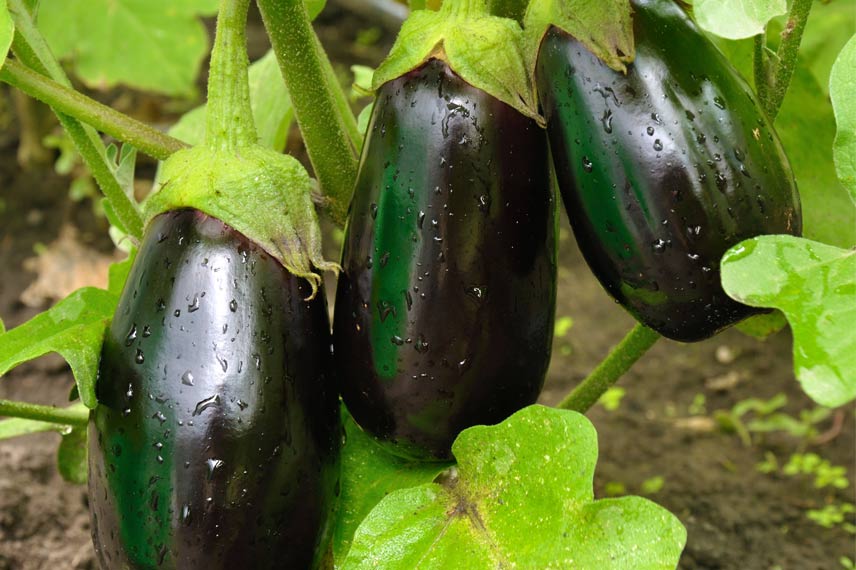
‘Bonica’ F1 aubergine
The ‘Bonica’ F1 produces traditional round purple-black fruits measuring 14 to 16 cm in length, with an average weight of 250 to 300 g each. These fruits also offer firm, white flesh that is only consumed when cooked.
This easy-to-succeed hybrid variety thrives in cool, rich, light soils and well-sunny exposures. Being early, it can be sown in a heated shelter from January to April. You can then harvest the fruits from June to October.
‘Barbentane’ Aubergine: a productive variety with long fruits
Early field variety, the Violette longue de Barbentane is known for its excellent productivity and ability to resist fungal diseases, such as blight and powdery mildew (it has good tolerance to moisture).
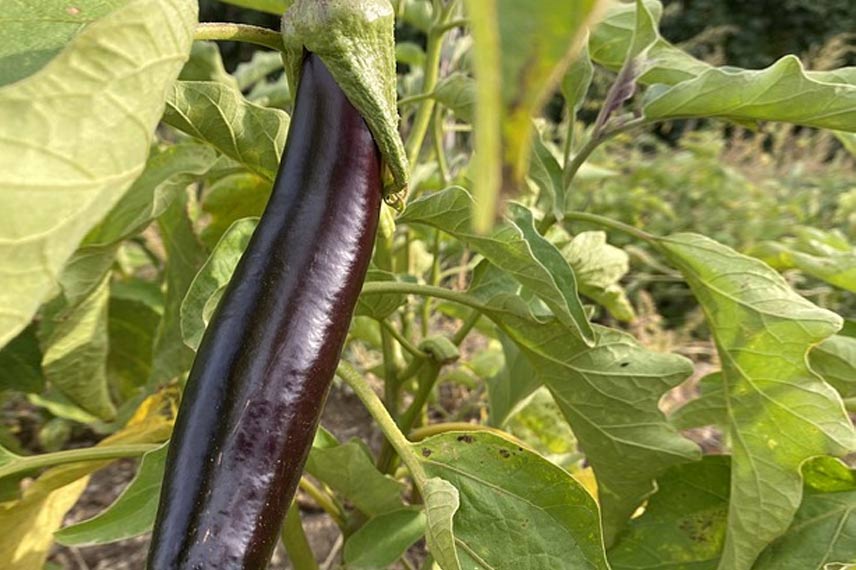
Barbentane aubergine
Its dark purple fruits are particularly elongated as they measure up to 25 cm long. They have a firm and tasty flesh, along with good nutritional value. In cooking, they can be enjoyed sautéed, stuffed, or in ratatouille.
The Barbentane aubergine is easy to grow in a sunny location, in rich, fresh, and well-drained soil. It is sown between February (under heated cover) and May (in open ground), for a harvest as needed between June and September.
Aubergine ‘Baluroi’ F1: a tasty and easy-to-grow hybrid
The aubergine ‘Baluroi’ F1 is a variety of the ‘Barbentane’ type, as vigorous as it is productive and resistant to diseases. Valued for its excellent productivity, this aubergine is also noteworthy for its sweet flavour and good taste qualities.
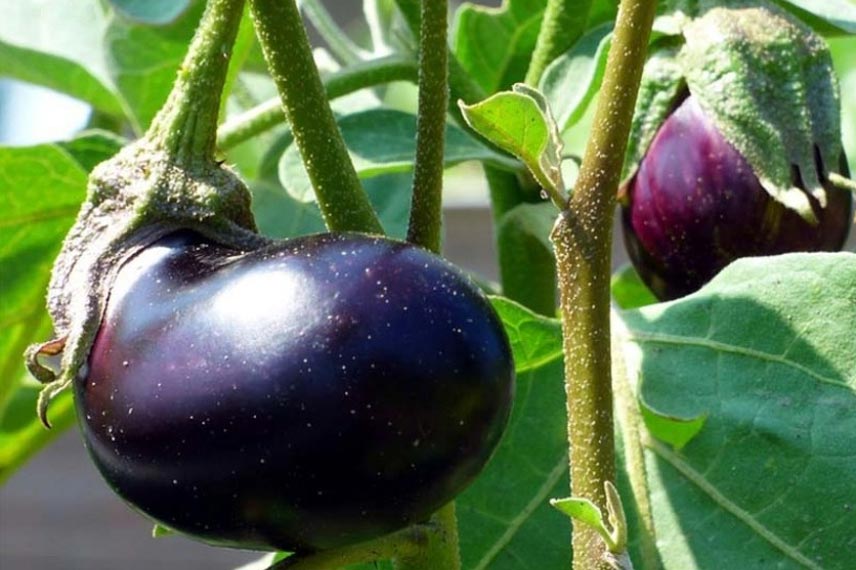
Aubergine ‘Baluroi’ F1
This variety produces abundantly beautiful elongated fruits, measuring 22 to 25 cm in length. Their epidermis is very dark purple and shiny, enclosing a delicious white flesh that is wonderfully suited for all aubergine recipes.
Grown in the sun in cool clay-loam soil, the ‘Baluroi’ F1 requires little maintenance, apart from good mulching and regular watering. It is sown in a heated shelter between March and April, before being planted between May and June, for a harvest from July to October.
- Subscribe!
- Contents
![[plant_variety id="6" difficulty="beginner"]](https://en.promessedefleurs.eu/blogwp/wp-content/uploads/2021/10/Aubergine-6-varietes-pour-debutant.jpg)































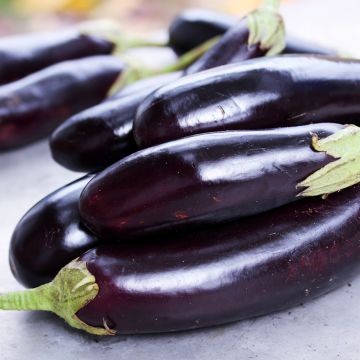
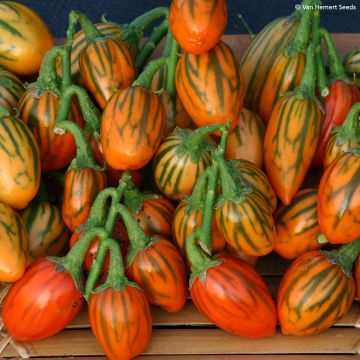
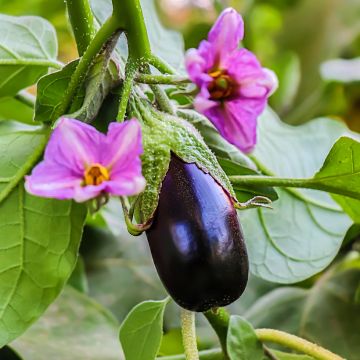
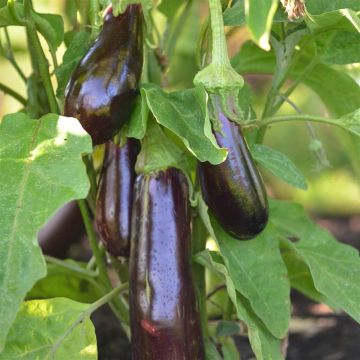
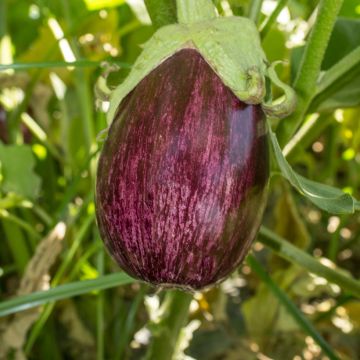
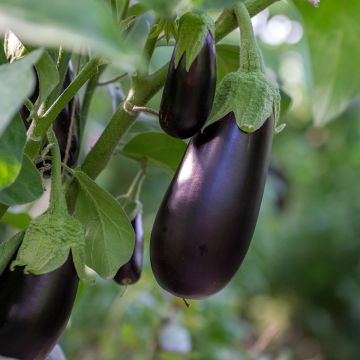
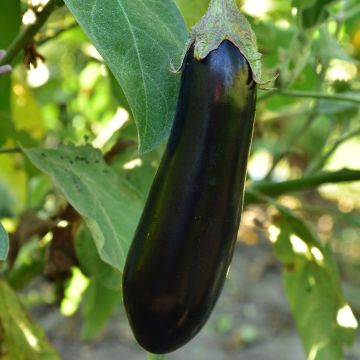
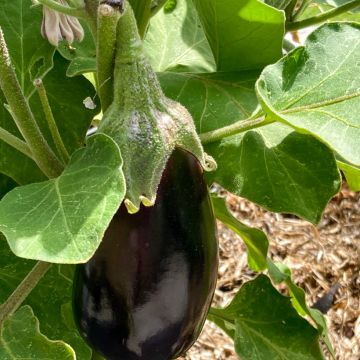
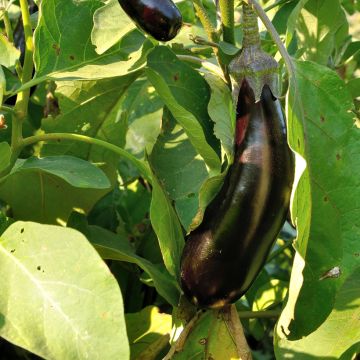
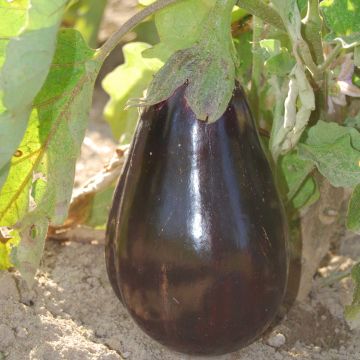
Comments